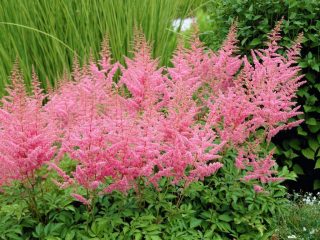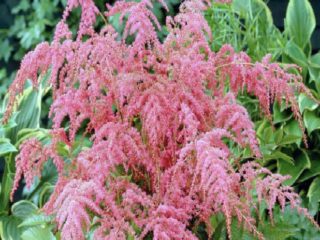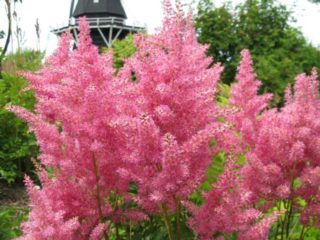Content
Astilba is a beautiful perennial plant found in various regions of Russia. Due to its excellent endurance and frost resistance, this shrub is increasingly used by gardeners to decorate plots. In order for the plant to please with its beautiful flowering, you should adhere to some care rules. It is necessary to cut the astilbe for the winter in order to properly prepare it for the cold weather.
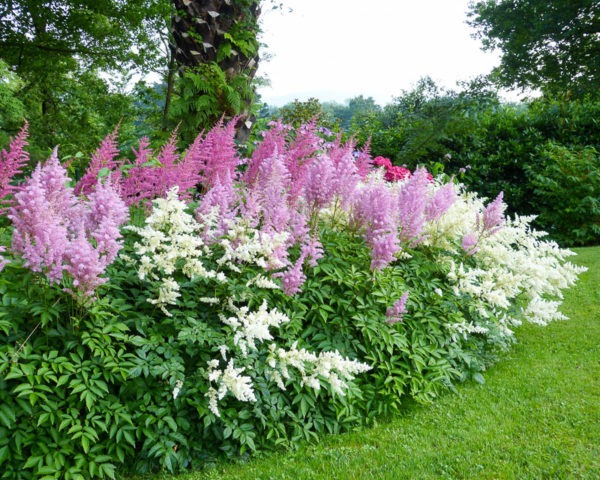
Top dressing, mulching and autumn pruning will help the plant gain strength for effective growth and flowering in spring.
Do I need to cut astilba in the fall
Depending on the variety, the flowering of shrubs occurs in different periods, from June to August. After its completion, the plant should be pruned. The autumn procedure must be carried out annually for 3 main reasons:
- Dried stalks left before spring can ruin the appearance of the shrub.
- The foliage left behind will die with the arrival of frost, and this will create conditions for the development of diseases and the wintering of insect pests.
- It is easier to cover carefully trimmed bushes before the onset of cold weather.
The procedure should not be postponed. It is necessary to prune the astilbe in the fall for the winter before the plant begins to lay the seeds. In this case, it will not waste extra energy and will direct all the nutrients to strengthen the root system.
Timing of pruning astilba
In the fall, after flowering, dried panicles give the garden a colorful look. If you cut the shrubs right away, they will lose their attractiveness, although they can delight the eye with dried flowers before the onset of cold weather.
Experienced gardeners do not cut astilba for the winter in the fall immediately, but gradually, as the flowering ceases and dry brushes appear. The branches are removed as soon as the inflorescences acquire a yellow-brown hue, and the petals begin to fall off them.
Depending on the characteristics of the astilba variety, this stage is carried out in July-August. The foliage and shoots are cut in October-November after they darken due to the arrival of the first night frosts.
When is it better to prune astilbe: in spring or autumn
Astilba is frost resistant. An adult plant does not need shelter; therefore, the procedure for removing shoots and branches, if necessary, can be postponed to spring. For young astilbe shrubs, especially in the first year of growth, pruning in the fall for the winter should be done without fail.
Otherwise, the root system will be underdeveloped. Ornamental shrubs may not survive the winter frost and die.

Blooming astilba is a great decoration for any garden plot or park recreation area.
When to cut astilba in the fall for the winter
Astilba pruning is carried out in 2 stages:
- After the end of flowering, dried brushes of inflorescences are selectively cut off.
- The aboveground part of the plants is completely cut off after the onset of the first frost.
The upper part of the shrub dies off during the cold season. In order not to leave unnecessary vegetation on the site, astilbe must be cut off for the winter.
When to cut astilbe for the winter in the Moscow region and regions
In different regions of the country, the timing of the autumn pruning of astilbe differs depending on the climatic features. In the south, in the Moscow region and in areas of central Russia characterized by a mild warm climate, autumn pruning is carried out in November.
On the territory of Siberia and the Urals, characterized by the early arrival of cold weather, astilbe is cut for the winter in October.
How to cut astilbe for the winter
After flowering is complete, dry astilba brushes are removed along with the shoots on which they grew. When pruning and preparing plants for the cold in autumn, you should not leave too high stems. Such shrubs look sloppy, they are inconvenient to cover for the winter. The height of the remaining part of the shoots should not exceed 1 cm.
Rules for pruning astilba in the fall in the open field
In order to properly and safely prune astilbe in the fall, use a garden pruner or shears. Before use, the instruments should be disinfected for 30 minutes in a 1% manganese solution.
Such treatment will protect flowering shrubs from infection with various infectious and viral diseases. To prevent the transfer of pathogens from diseased plants to healthy ones, disinfection treatment of the tool blades should be carried out after each bush.
Each year, daughter buds are formed on the upper part of the rhizome, the lower one gradually dies off. The vertical growth of the root is 3-5 cm. This leads to the fact that old bushes begin to bulge out of the soil, and young roots located at the base of the buds are located on top of the ground and dry out, lacking moisture.
To avoid this phenomenon, every year, when astilbe is cut for the winter, shoots that are just above the root are removed and young buds are left, making sure that they are not exposed. To do this, after pruning, the soil is loosened and a small embankment is built at the base of the bush with a height of 4-5 cm.
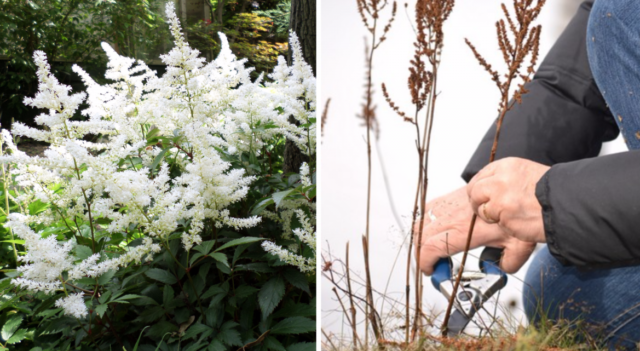
If a young plant is planted in open ground in the fall, its first pruning is carried out only the next year.
Cut stems and dry foliage should be collected and removed from the site. Removed parts should not be left near bushes. They will impede the supply of oxygen to the root system and, as a result of natural decomposition, will create favorable conditions for the spread of fungal diseases.
Astilba care after pruning
After pruning, the plants are spud and mulched. Such treatment will protect the root system of shrubs from freezing. The following components with good air permeability can be used as mulch:
- compost;
- rotted manure;
- woody shredded bark;
- dry sawdust;
- peat.
The mulching of the trunks is carried out immediately after pruning the plants. The thickness of the protective layer should be 5-10 cm.
In the northern regions, the soil freezes to a depth of 1.5 m, therefore, before the onset of cold weather, the shrubs not only mulch, but also cover with material stretched on wooden frames.
In the southern regions of the country with a warm climate and snowy, moderately frosty winters, astilbe does not need to cover the trunks with a mulching layer. For effective preparation for winter, it is enough just to huddle them.
Conclusion
It is necessary to prune the astilbe for the winter in the fall in order to create favorable conditions for the flowering plant for growth and beautiful flowering in the spring. Pruning, feeding and mulching in the fall will help your plants survive the winter and strengthen the root system.
